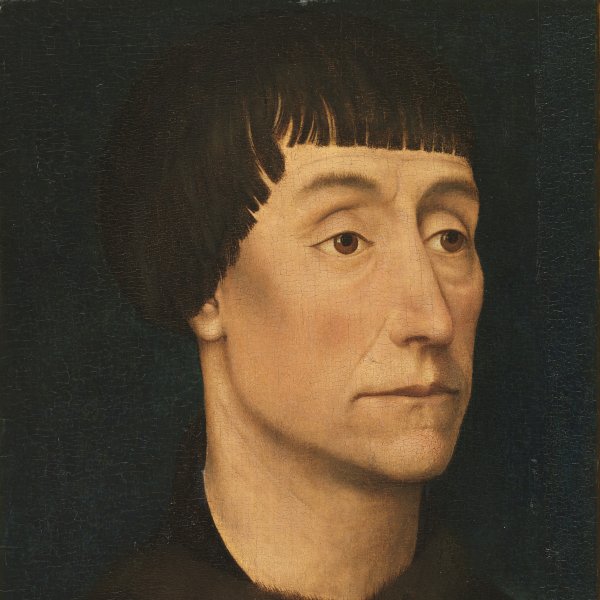Rogier van der Weyden (attributed to)
Together with Jan van Eyck, Rogier van der Weyden is the most important Flemish artist of the first half of the fifteenth century. Given that he never signed his works, Van der Weyden's oeuvre has been reconstructed on the basis of a number of stylistic similarities between a group of works which are all referred to in documents and thus provide reliable information about the execution of his paintings. Trained at a fairly late age in the studio of Robert Campin, he is documented in Campin's studio in 1427 and was designated a master in 1432. In 1435 he moved to Brussels where he was named official painter to the city and produced one of his first known works: four panels of The Justice of Trajan and The Justice of Herkinbald (now lost), which formed an allegorical decoration in a room in the Town Hall. Van der Weyden made only one documented trip, to Rome in 1450, which he travelled to as a Holy Year pilgrim. The representation of human sentiments such as pain and sadness and the moving expressions of his figures, together with his remarkable technique, were the artist's major contribution to fifteenth-century Flemish painting. Van der Weyden was famous in his own lifetime and his works were widely known, partly through the versions and copies made by his own extensive studio. Among his most splendid paintings are the Descent from the Cross in the Museo del Prado, Madrid, in which the artist used a gold ground; The Miraflores Triptych in the Berlin Gemäldegalerie; The Columba Triptych in the Alte Pinakothek, Munich, and The Crucifixion in El Escorial. Among his outstanding portraits is the head of a woman in the National Gallery, Washington.





